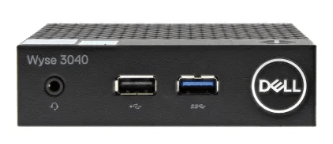If you are looking at using thin clients in your Citrix, VMware or Microsoft based virtual desktop / published app environment here are some points to think about:
Is your organization always on the cutting edge of technology? If so, be careful with your selection. When Citrix, Microsoft or VMWare come out with a new feature you typically need to be on a certain version of their client to take advantage of it. Vendors like Dell and HP provide firmware and app package updates, but it can take a while for them to get those out. If you are on an older model they can stop providing feature updates altogether. An example that sticks in my mind is when Microsoft Teams replaced Skype and Dell had to come out with a new version of their ThinOS to support the offload. Those running older Wyse terminals were stuck with the 8.x version with no path forward to 9.x. A vendor like IGEL may be a better fit for you in this case as their product is software based and more flexible. If you are already using a device management system like Intune, Windows PCs are hard to beat in the flexibility department.
If your organization is on a 5-year upgrade cycle with your virtualization environment and runs applications that don’t need a lot of bells and whistles, you can probably get away with running the same thin clients for 5 years or more. I have seen some places make it longer than that.
When looking at costs, a lot of people think a thin client is cheaper than putting in full Windows desktops. This depends on your scenario. What apps are you planning on supporting? Do you need to do audio/video offloading? How many USB peripherals will you have? Are you going to buy monitors or are you going with an AIO design? As the specs increase so does the price and in a lot of cases the thin client costs more than a Windows desktop. That increased price might be worth it to you though depending on your scenario.
Another thing to think about in terms of cost is management. If you have a lot of thin clients, you are going to want to centrally manage them. This could be as simple as a network location hosting the config that these boot to. Most vendors also have a free management product you can throw on a server in your environment. But what if you want more feature rich management like the ability to manage off corporate network devices in home offices? A cloud-based system like the Wyse Management Suite is ideal in these cases. You’ll pay a subscription-based fee, usually per device, for something like this.
Another overlooked point is training for your support staff. While help desk and workstation support teams understand how to work with a full Windows based computer, a lot of times thin client management will be foreign to them. If you go this route, make sure that there is adequate training provided. I’ve seen the lack of up-front training derail a thin client strategy. Support staff become frustrated by their inability to provide resolution to issues and can start a wave of bad that eventually reaches C level executives and has you scrambling to do damage control.
These are just some areas you’ll want to look at when you are comparing thin clients to using regular windows computers in your environment. If you look at all the pros and cons and decide to move ahead with thin clients, you can usually get the vendor to send you a test unit so you can set up a proof of concept and make sure it meets your needs before committing to making a large purchase.
